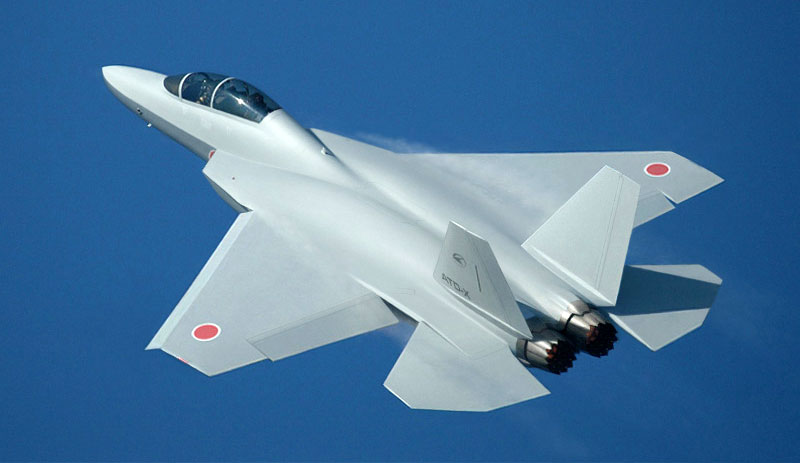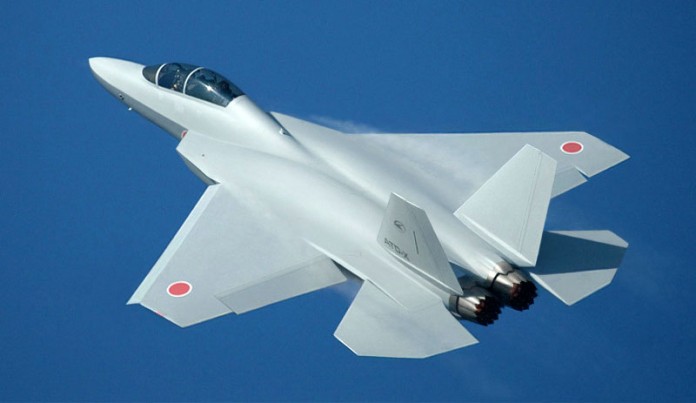
Japan’s defense ministry’s Technical Research and Development Institute (TRDI) is planning to unveil the country’s advanced technology demonstrator-experimental (ATD-X) plane within months; the lightweight stealth aircraft is scheduled to make its maiden flight later this year, Japan’s defense minister Itsunori Onodera has confirmed. ATD-X is positioned to become Japan’s next generation stealth fighter, replacing 94 locally produced F-2 that entered service in the year 2000. Speaking to the foreign affairs and defense committee of Japan’s upper house, Onodera said the indigenous fighter demonstrator is few months behind schedule.
Powered by two afterburning turbofans each developing 11,023 pounds each (5,000kg), the aircraft is designed for maximum takeoff weight of 28,659 pounds (about 13 tonnes). With a wingspan of 9 meters (29.85 feet), and overall length of 14.174 meters (46.5 ft) the ATD-X (dubbed ‘Shinshin’) will be smaller than the F-35 and mush smaller, compared to Chinese or Russian stealth fighters.
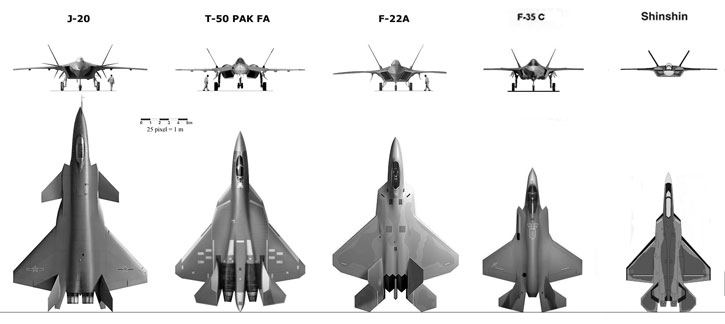
Mitsubishi is the main contractor for the ATD-X with Ishikawajima-Harima Heavy Industries (IHI) providing the XF5-1 afterburning turbofan for the plane. The same team has also produced a licensed version of the Boeing F-15J and its P&W F100 power plant. The two companies are also producing the F-2, the Japanese F-16 variant powered by a GE F110 engine. The companies will also share significant work sharing in the production of Japan’s 42 F-35As.
Through the 2000s the project evolved under research studies with the formal demonstration flight program launched in 2009. The program is on schedule to begin flight tests in 2014. Mitsubishi said that based on the tests results it will be ready for full scale development of a future stealth fighter by 2016.
The Shinshin (spirit of the heart in Japanese) will help mature advanced airframe, propulsion designs and manufacturing technologies necessary for the production of future fighters. The general design dates back to the early 2000s, when the ATD-X mockup was sent to France for radar cross-section tests. Following to those tests, Japanese engineers have tested a 1:5 scale model of the plane evaluating high angle of attack controllability. A full size mockup of the plane was unveiled publicly in 2007.
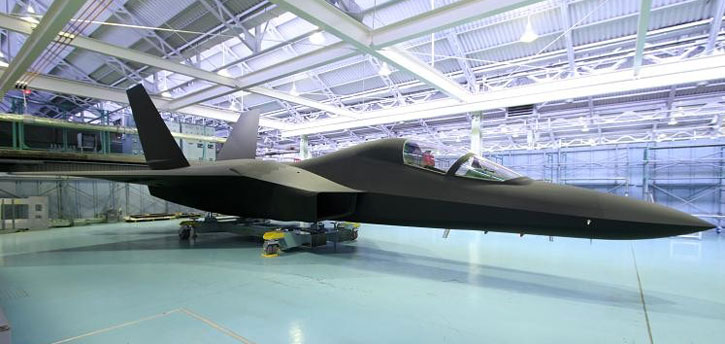
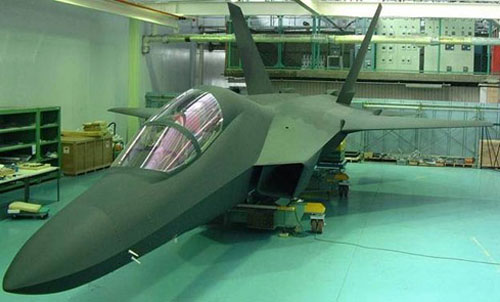
Among the technologies considered for the ATD-X are advanced fly by light fibre-optical flight control system, that will integrate ‘self healing’ capability, reconfiguring flight controls in case of malfunction or damage. The XF-5-1 afterburning engines will be equipped with three-dimensional thrust vectoring, providing additional lift and directional control augmenting the fighters’ flight control surfaces. Another system likely to be tested is an intelligent capability called “I3” (informed, intelligent, instantaneous) providing pilot assist.
The aircraft was scheduled to make its maiden flight in early 2015 but this milestone was delayed at least to the end of the year due to issues with the software that controls automatic engine restarts, according to officials at the country’s Ministry of Defence (MoD).
Japan intends to retire its F-2 beginning in 2020. A decision whether to co-produce a foreign designed aircraft or develop an indigenous one will be made in 2018. Although Japanese companies have produced several generations, they were mostly licensed production of foreign aircraft or derivatives of foreign designs. Indigenous programs focused mainly at specialized, non-combat designs, like the Mitsubishi PX-1 maritime surveillance/transport, Kawasaki HC-2 short takeoff and landing transport plane and T-4 trainer and ShinMaywa US-2 amphibian.
Harnessing this experience with state of the art technologies, the ATD-X program will essentially pave the way for Japan’s aerospace industry, proving it muster the necessary technologies to support, mature and afford locally designed 6th Generation fighters. These technologies will also be essential to position Japan in the future unmanned combat aircraft market.
